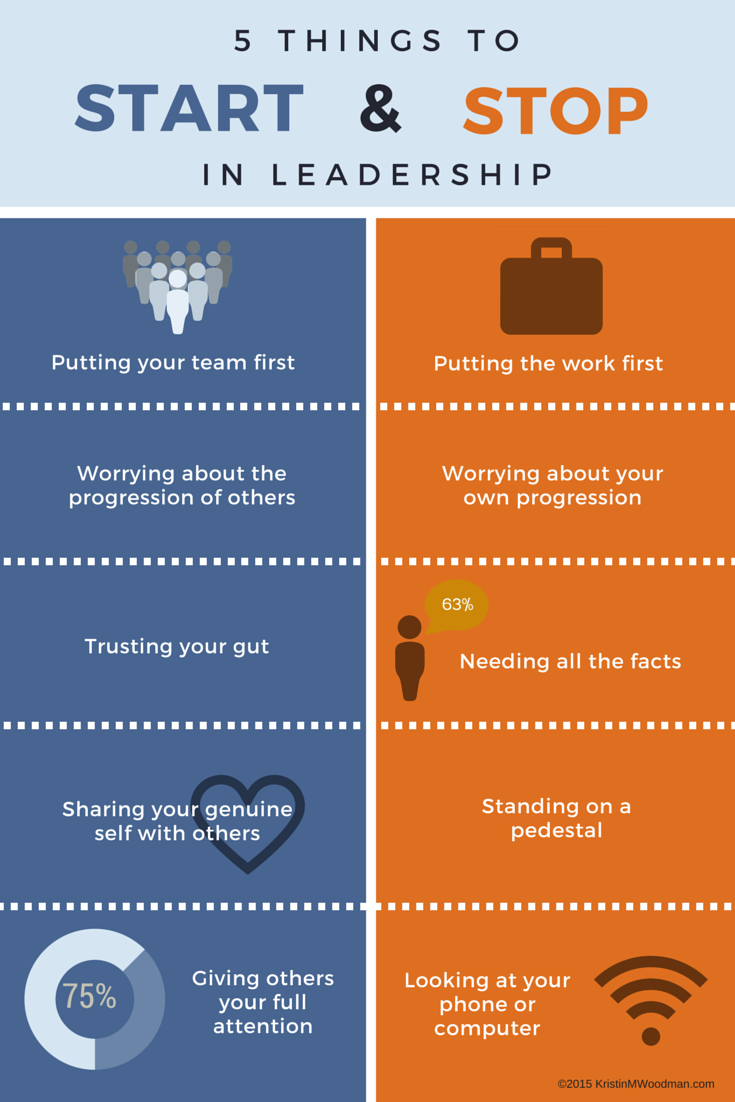
As I wrote last week, I try to start from the premise that people mean well. I have to believe that we all start out with good intentions. Over time, however, even the best intentioned of us stray from the path. As leaders, it’s very easy to get up every day and go to work, fight the fires and deal with the unplanned interruptions, just to do it again the next day. Before we know it, some very unleader-like traits can rear their ugly heads.
Even if we find ourselves doing things that won’t show up in anyone’s “Leadership 101” book, we can choose to change them. Here are five limiting behaviors that can be purged, and five alternatives that can get a leader back on-track with those best intentions.
 1. Stop putting the work first. Start putting your team first.
1. Stop putting the work first. Start putting your team first.
Focusing on the work product is the start of a slippery slope towards micro-management. Instead, focus on the people that get the work done. Do they understand what’s expected or the goal to be achieved? Do they have flexibility to figure out “how” to accomplish the work on their own? What help can you provide to clear the way?
By giving teams the support and resources they need to accomplish their goals, the work gets done through people empowerment, not results focus.
2. Stop focusing on your progression. Start worrying equally about someone else’s.
A core component of leadership is responsibility for others. A formal responsibility for others, in management positions, includes the power of decision-making and authority. The higher the position, the more authority. Shifting focus from doing the job – well – to keeping the job or getting the next job puts self-interest ahead of team interest.
Regain a leadership focus by investing time in the development of others. Use your authority to sponsor someone and help them move into greater levels of responsibility. Have breakfast or lunch with someone you can open doors for, rather than someone who can open doors for you.
3. Stop worrying about having all the facts. Start trusting your gut.
No matter how much data is gathered or analysis conducted, there will never be enough to know for sure how a situation will play out. Whether it’s an investment, personnel hire, or taking a new role, there is always the possibility that something can go very wrong or very right.
When all signs point to something being a good idea, but the gut says something is off, it pays to listen to the gut. On the flip side, some risks might require a huge leap of faith, but pay major dividends. Leaders need their teams to be willing to take risks in order to grow and develop. To do that, it’s critical to provide a safe environment for them to fail and learn from failure. If a leader doesn’t feel comfortable taking risks, neither will the team.
4. Stop standing on a pedestal. Start sharing your genuine self with others.
Leaders are often looked up to and thought to have “the answers”. By allowing the perception to exist that leaders are better or minimally different than the teams they serve, the inevitable reality of being human can be disheartening for the team. And their own visions of leadership.
Sharing mis-steps with aspiring leaders, admitting to and fixing mistakes, and being seen as an approachable human creates connection and trust between teams and their leaders.
5. Stop looking at the phone or computer. Start giving people your full attention.
Ever heard the ding of an email and turned toward the computer to read it, while talking to someone else? Looked at a smartphone instead of the person talking during a meeting or presentation? Leaders at all levels of an organization are busy. However, when the “possible” of a distraction takes precedence over the “actual” of in-the-moment person-to-person interaction, it tells the person that they are not as important as whatever else might be going on.
In the world of instant contact technology, it’s even more critical to put down the phone and look away from the computer. Focus full attention on the moment, on the potential connection being created. It might be the only moment you get.
What other limiting behaviors would you stop? What would you embrace to expand your leadership impact? I’d love to hear from you in the comments.









One Response